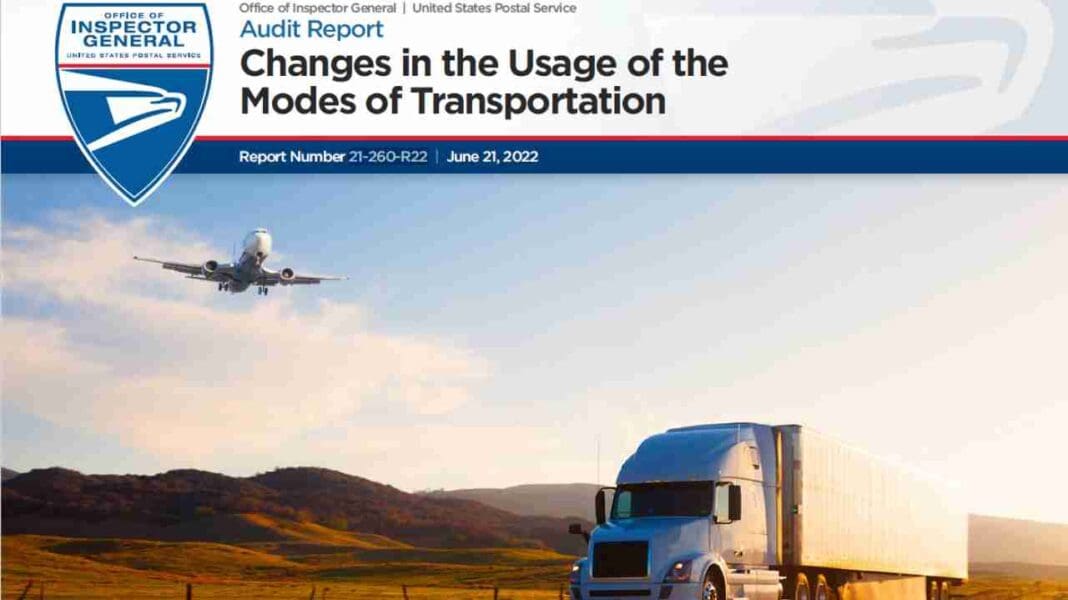Background
To meet its customers’ demands and needs, the U.S. Postal Service addressed its financial and operational challenges by developing its Ten-Year Plan — Delivering for America: Our Vision and Ten-Year Plan to Achieve Financial Sustainability and Service Excellence (the Plan). The Plan establishes strategies for achieving financial sustainability and service excellence and outlines the development of a new operating model to help improve service through strategies aligned to the changing needs of its customers.
What We Did
Our objective was to evaluate the Postal Service’s plan to change modes of transportation for First-Class Mail.
What We Found
We found that the Postal Service has an opportunity to improve the management of one of the Plan’s major initiatives to restructure the Postal Service transportation network by shifting First-Class Mail from air to surface transportation. Specifically, the Postal Service did not always execute its decision-making process for the proposed mode changes to shift First-Class Mail from air to surface transportation in a timely manner. For example, during peak season, the Postal Service implemented mode changes approximately 131 and 62 days after it contractually finalized air volume needs with [redacted] and [redacted], respectively. As a result, the OIG determined that the Postal Service paid $258,420 in minimum penalties associated with the air to surface mode changes during the month of December 2021.



